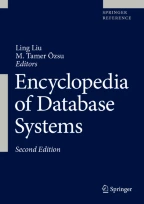Synonyms
Dendrogram; Heat map
Definition
Visualizing clusters is a way to facilitate human experts in evaluating, exploring, or interpreting the results of a cluster analysis. Clustering is an unsupervised learning technique, which groups a set of n data objects D = {x1, …, xn} into clusters so that objects in the same cluster are similar and objects from different clusters are dissimilar to each other. The data can be available (i) as (n × n) matrix of similarities (or dissimilarities), and (ii) as (n × d) data matrix, which describes each data object by a d-dimensional vector. The second form has to be accompanied by a suitable similarity or dissimilarity measure, which computes for a pair of d-dimensional vectors a (dis)similarity score. A typical example of such measure is the Euclidian metric. Clustering results may come in different forms: (i) as partition of D, (ii) as model, which summarizes properties of D, and (iii) as set of hierarchically nested partitions of D....
Access this chapter
Tax calculation will be finalised at checkout
Purchases are for personal use only
Recommended Reading
Ankerst M, Breunig MM, Kriegel H-P, Sander J. Optics: ordering points to identify the clustering structure. In: Proceedings of the ACM SIGMOD International Conference on Management of Data; 1999. p. 49–60.
Bar-Joseph Z, Gifford DK, Jaakkola TS. Fast optimal leaf ordering for hierarchical clustering. Bioinformatics. 2001;17(90001):22–9.
Bishop C. Pattern classification and machine learning. New York: Springer; 2006.
Campello RJGB, Moulavi D, Zimek A, Sander J. A framework for semi-supervised and unsupervised optimal extraction of clusters from hierarchies. Data Min Knowl Disc. 2013;27(3):344–71.
Domingos P. Occam’s two razors: the sharp and the blunt. In: Proceedings of the 4th International Conference on Knowledge Discovery and Data Mining; 1998. p. 37–43.
Faloutsos C, Lin K-I. Fastmap: a fast algorithm for indexing, data-mining and visualization of traditional and multimedia datasets. In: Proceedings of the ACM SIGMOD International Conference on Management of Data; 1995. p. 163–74.
Fua Y-H, Rundensteiner EA, Ward MO. Hierarchical parallel coordinates for visualizing large multivariate data sets. In: Proceedings of the IEEE Conference on Visualization; 1999.
Goldberger J, Roweis ST, Hinton GE, Salakhutdinov R. Neighbourhood components analysis. In: Advances in Neural Information Proceedings of the Systems 18, Proceedings of the Neural Information Proceedings of the Systems; 2005. p. 513–20.
Grimmer J, King G. General purpose computer-assisted clustering and conceptualization. Proc Natl Acad Sci. 2011;108(7):2643–50.
Hahsler M, Hornik K, Buchta C. Getting things in order: an introduction to the R package seriation. http:// cran.at.r-project.org/web/packages/seriation/vignettes /seriation.pdf
Iwata T, Saito K, Ueda N, Stromsten S, Griffiths TL, Tenenbaum JB. Parametric embedding for class visualization. Neural Comput. 2007;19(9):2536–56.
Kaban A, Sun J, Raychaudhury S, Nolan L. On class visualisation for high dimensional data: exploring scientific data sets. In: Proceedings of the 9th International Conference on Discovery Science; 2006.
Koren Y, Harel D. A two-way visualization method for clustered data. In: Proceedings of the 9th ACM SIGKDD International Conference on Knowledge Discovery and Data Mining; 2003. p. 589–94.
Langfelder P, Zhang B, Horvath S. Defining clusters from a hierarchical cluster tree: the dynamic tree cut package for R. Bioinformatics. 2008;24(5):719–20.
Meilă M. Comparing clusterings – an information based distance. J Multivar Anal. 2007;98(5):873–95.
Sammon JW. A nonlinear mapping for data structure analysis. IEEE Trans Comput. 1969;18(5):401–9.
Strehl A, Ghosh J. Relationship-based clustering and visualization for high-dimensional data mining. INFORMS J Comput. 2003;15(2):208–30.
Author information
Authors and Affiliations
Corresponding author
Editor information
Editors and Affiliations
Rights and permissions
Copyright information
© 2018 Springer Science+Business Media, LLC, part of Springer Nature
About this entry
Cite this entry
Hinneburg, A. (2018). Visualizing Clustering Results. In: Liu, L., Özsu, M.T. (eds) Encyclopedia of Database Systems. Springer, New York, NY. https://doi.org/10.1007/978-1-4614-8265-9_617
Download citation
DOI: https://doi.org/10.1007/978-1-4614-8265-9_617
Published:
Publisher Name: Springer, New York, NY
Print ISBN: 978-1-4614-8266-6
Online ISBN: 978-1-4614-8265-9
eBook Packages: Computer ScienceReference Module Computer Science and Engineering
